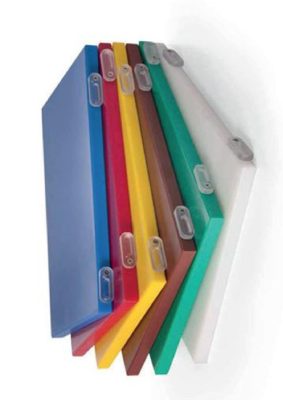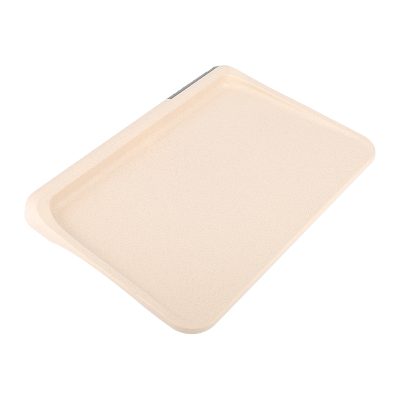Choice of plastic cutting board colors
Plastic cutting boards made of PE are available in a variety of colors and are very easy to distinguish. Especially for some restaurants, plastic vegetable dumplings are used. If the color is different, it is better to distinguish them in the process of use. There are as many as 6 kinds of chopping board colors in hotels, the use of each color is generally red chopping board for raw meat, brown chopping board for cooked meat, white chopping board for dairy products, blue chopping board for seafood, green chopping board The chopping board is used for vegetables and fruits, and the yellow chopping board is used for poultry.
Plastic vegetable dumplings are generally divided into two types, one is PE material and the other is PP material. PE material cutting board can present a variety of colors, PP material density is higher than PE, only one color is white, and the price is much more expensive than PE material. Pigments made of PP powder are called PP cutting boards.
PP plastic raw material, PP is a polymer of polypropylene and propylene, the English name polypropylene is abbreviated as PP homopolymer, and the polymer formed by the polymerization of a monomer is called a homopolymer. Polymer Polymers are divided into natural polymers and synthetic polymers. Natural rubber, cotton, etc. are all natural polymers.
PP plastic raw material is a semi-crystalline material. Its Vicat softening temperature is 150C. Due to the high degree of crystallinity, this material has good surface stiffness and scratch resistance properties. It does not suffer from environmental stress cracking problems.
PE: The full name is Polyethylene, which is the simplest polymer organic compound. It is the most widely used polymer material in the world today. It is polymerized from ethylene. density polyethylene.
PP: White translucent, waxy when unpigmented; lighter than polyethylene. The transparency is also better than that of polyethylene, and it is harder than polyethylene.
Common products: basins, barrels, furniture, films, woven bags, bottle caps, car bumpers, etc.
PE: milky white, translucent and waxy when uncolored; the product feels smooth when touched by hand, flexible and pliable; slightly stretchable. Generally, low-density polyethylene is softer and has better transparency; high-density polyethylene is harder.
Common products: handbags, water pipes, oil drums, beverage bottles (calcium milk bottles), daily necessities, etc.
Whether it is PP or PE, the plastic vegetable dumplings produced by both are non-toxic.







